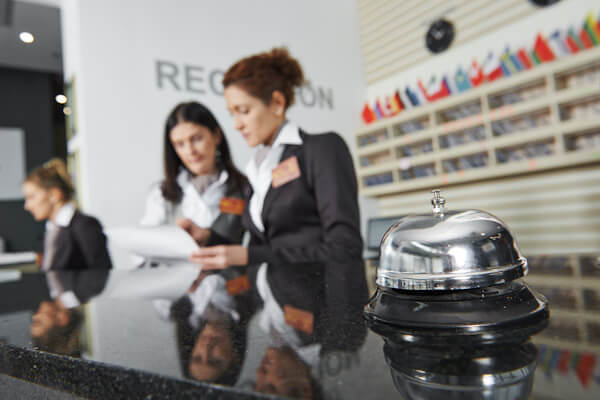Hospitality trends: How COVID-19 recovery looks in different regions
You can’t look at the news these days without seeing a story about the recovery of the hospitality industry. With the vaccine rollout under way in most parts of the developed world, optimism is high, despite the fact that variants continue to pop up and we are far from eradicating the disease, as evidenced by the news out of India this week. This news is a sober reminder that where your hotel is located plays a big role in what recovery looks like for you. To write this blog article, we poured over international news stories to unearth hospitality trends to see how COVID-19 recovery looks in different regions.
North America:
In North America, three Covid-19 vaccines have been in the market since the end of December 2020. Despite more than 32 million cases and half a million deaths, the hospitality industry continued to survive thanks to local tourism. Travellers, tired of remaining in their homes, loaded up their cars for short getaways, workations and a change of pace.
The good news is that the U.S. hotel industry posted its highest demand and occupancy levels since the beginning of the pandemic, according to STR‘s latest weekly data through April 10th. Other signs of hotel recovery include Occupancy at 59.7%, Average daily rate (ADR) of US$112.22 and Revenue per available room (RevPAR) at US$66.99. While we have a ways to go to return to 2019 hospitality trends, things are looking up.
According to STR’s U.S. Market Recovery monitor, “The week of 4-10 April was all about demand. The number of U.S. room nights sold surged to 22 million, which was the most since the start of the pandemic. As a result, occupancy reached 59.7%, also the highest level of the past year. On a total-room-inventory (TRI) basis, which includes temporarily closed hotels because of the pandemic, U.S. occupancy reached 56.6%—yes, that was another pandemic-era high. On average, the industry sold 3.2 million rooms per day during the week. A year ago, daily demand was a third of that.”
APAC:
In the Asia Pacific region, hospitality experts predict that hotels will return to 2019 levels in 2023, according to Colliers International’s Hotel Insights 1Q2021 report. However, the state of APAC hotels today is a different story. Although Singapore occupancy reached 71% for 2020, most countries are only doing a fraction of the business that they were doing in 2019. Japan’s occupancy is 40% and Thailand’s is only 29%. With 14-day quarantines still in effect for many APAC countries, these levels aren’t surprising.
But to show the industry that traveling and gathering is safe, NoVacancy Hotel+Accommodation Industry Expo will return on 1-2 June 2021 to ICC Sydney Exhibition Centre. This is one of the first hospitality events to take place in person during the pandemic and a strong signal to the industry that things are heating up.
EMEA:
Europe, Middle East and Africa are at the beginning phase of recovery, if at all. Most hotels are shut down for leisure travel and several European Union nations have extended or re-imposed lockdown measures as a third wave of the pandemic takes hold. Since late January, essential travellers arriving from outside the EU have to have a test for COVID-19 before departure. To combat the new virulent UK strain, the EU has already blocked all but freight or travelers on essential trips from entering the bloc from Britain.
Experts predict that business travel will be slower to recover than leisure travel, like most parts of the world. The leisure market will be driven by pent-up demand and savings from a year in lock-down. Travel restrictions in Europe are likely to life in May, just in time for summer travel. Here’s hoping that many people seize the opportunity to safely travel once they’re able to again.
To capture summer bookings and aid hotel recovery, hoteliers will need to be laser focused and data-driven. Rather than blasting the entire database over and over again with summer promotions, they should segment their database and send smaller, more targeted campaigns. Why? A sneak peek of the data in our annual Marketing Benchmark report reveals that smaller segments improved open rates by up to 102% in 2020. Global segments with more than 50k recipients achieved a 12.8% open rate whereas segments less than 5k outperformed with a 25.9% open rate.
Revinate Marketing customers have all the tools they need to easily segment guests and drive summer bookings. We suggest the following two segments as a starting point:
Geo-location
With many travellers preferring to stay close to home this summer, targeting email promotions at your local guests is a great way to drive bookings this summer. To appeal to your local travelers, you’ll need to promote your property differently. These customers will arrive by car so ensure that your promotional emails highlight not only your hotel’s amenities and services, but also local destinations that might not be well known in your vicinity. Partner with your hidden-gem restaurants and feature collaborations with local artisans. Let your guests know that there’s a lot to look forward to, even if they don’t have to travel far to reach you.
Revinate makes it easy to segment your locals in your hotel CRM. Revinate Marketing customers can use the geo-location feature to create segments based on guest location information found in your PMS or uploaded contact lists. When creating your segments, Revinate customers can easily select the parameter ‘Guest Location’ then let Revinate guide you to determine which guests are included. (For example, they can be located ‘within’, ‘beyond’ or ‘not in’ the location.)
Families
By segmenting your database to isolate families, you can personalize your promotions to feature family-friendly activities that will drive bookings. Emails targeted to families should feature photos that show kids enjoying themselves on-property and the content should speak to the activities that the whole family will enjoy.
A great example of using demographic data to personalize an email promotion comes from Mountain View Grand Resort & Spa. With PMS data about which guests travel with children, the resort personalized the promotion to the family segment of their database, with images that clearly show the resort’s family friendliness. A quick glance at the email would let any traveler with kids know that the hotel is perfect for kids.
As we continue to monitor the global news and speak with our customers about hospitality trends that affect recovery, we will keep you posted on new information. Please follow our social media for more helpful tips and reach out if we can help you leverage your guest data to drive new bookings.
Related Posts

Insights that drive results
Subscribe now to get the latest content
This site is protected by reCAPTCHA and the Google Privacy Policy and Terms of Service apply. *Required fields.



